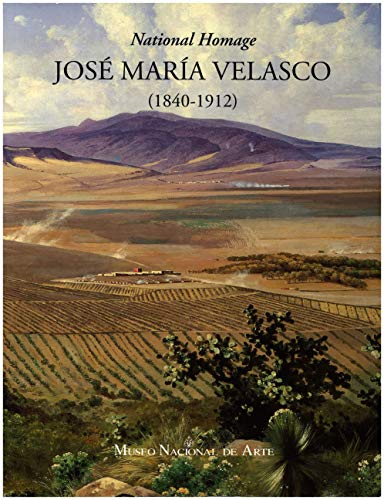Eskenazi Museum of Art
Want to see more artworks by Latine and Latin American Artists?
You can visit the Eskenazi Museum of Art to see more paintings, prints, and artworks. Below are a select few artists and their works from the Rhonda and Anthony Moravec Gallery in the Prints, Drawings, and Photographs Center, and the Modern and Contemporary gallery, featuring European and American art from the 19th century on. If you'd like to see earlier works by Latine and Latine American Artists, you can also visit the Raymond and Laura Wielgus Gallery of the Arts of Africa, Oceania, and Indigenous Art of the Americas.
Diego Rivera
Self-Portrait, 1930 [Print, can request a viewing by contacting Emma Fulce]
Danzante, 1947 [On display in the Modern and Contemporary gallery, which features European and American art from the 19th century on]
Diego Rivera (1886-1957) was a prolific Mexican painter. His large frescoes helped establish the mural movement in Mexican and international art. Rivera's third wife was fellow Mexican artist Frida Kahlo, with whom he had a volatile relationship. Due to his importance in the country's art history, the government of Mexico declared Rivera's works as monumentos historicos and he holds the record for highest price at auction for a work by a Latin American artist.
-
Diego Rivera by
ISBN: 0810932342Publication Date: 1999-09-01Diego Rivera is regarded as one of the greatest Mexican artists of the 20th century - an audacious muralist, voracious lover, and ardent leftist who befriended Picasso. In this part biography, part appreciation, Hamill turns a novelist's eye to Rivera's tempestuous career.
Guillermo Silva Santamaria
Anual Salon (Annual Salon), 1966-1967 [Print, can request a viewing by contacting Emma Fulce]
Guillermo Silva Santamaria (1921-2007) was a Colombian painter, printmaker, sculptor, engraver, writer, and Surrealist. He was a master of intaglio (a design incised or engraved into a material) and exhibited his works across the globe. He was also a teacher and trained many students in his practice while living in Mexico. He later moved to India before finally settling in Spain and Norway, depending on the time of year.
-
SilvaMontero, Esteban (2007). "Silva" (PDF). Aehcos Magazine (in Spanish). Málaga, Spain: Asociación de Empresarios Hoteleros de la Costa del Sol: 25–27. Accessed 6 October 2022.
Short biography written on Silva following his death (in Spanish).
José María Velasco
Valley of Mexico from the Tepeyac, 1895 [On display in the Modern and Contemporary gallery, which features European and American art from the 19th century on]
José María Velasco (1840-1912) has been described as a polymath for his practice in science, history, and art. The fusion of these fields can be found in his landscape paintings where he draw upon the unique geography and botany of Mexico to communicate themes of national identity and pride through his art. Velasco's formal education commenced in 1858 at the Academia de Bellas Artes de San Carlos, where he was an apprentice of the Italian landscape painter, Eugenio Landesio. As his career progressed, he received many distinctions such as the gold medal of the Mexican National Expositions of Bellas Artes in 1874 and 1876, the gold medal of the Philadelphia International Exposition in 1876, and the medal of the Paris Universal Exposition in 1889. His education and awards highlight his identity as a polymath not only of subjects, but as an artist operating during the rise of transnational movement and study.
-
 National homage, José María Velasco, 1840-1912
by
Publication Date: 1993
National homage, José María Velasco, 1840-1912
by
Publication Date: 1993
Rufino Tamayo
Two Women Combing Their Hair, 1941 [On display in the Modern and Contemporary gallery, which features European and American art from the 19th century on]
Set of four prints, 1976 [Print, can request a viewing by contacting Emma Fulce]
Rufino Tamayo (1899-1991) was active in the mid-20th century in Mexico and New York, painting figurative abstraction with surrealist influences. Tamayo was operating at the same time as Rivera and helped spotlight Mexico in the international art market; however, unlike Rivera, he did not believe that a revolution would benefit the future of Mexico. Tamayo's legacy is primarily concerned with his original graphic prints in which he cultivated every technique. Tamayo's graphic work, produced between 1925 and 1991, includes woodcuts, lithographs, etchings, and "Mixografia" prints.
-
 Rufino Tamayo
by
ISBN: 0847804550Publication Date: 1982-08-15Reproductions of the paintings of the Mexican artist, Rufino Tamayo, are combined with essays analyzing his artistic influences and the development of his career.
Rufino Tamayo
by
ISBN: 0847804550Publication Date: 1982-08-15Reproductions of the paintings of the Mexican artist, Rufino Tamayo, are combined with essays analyzing his artistic influences and the development of his career.